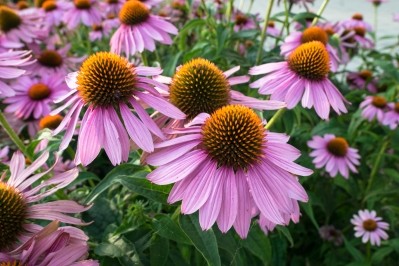BAPP lab guidance on turmeric comes as interest in botanical reaches fever pitch

The publication is the 57th that BAPP has put out, including bulletins and other lab guidances. BAPP is a cooperative effort between the American Botanical Council, the American Herbal Pharmacopoeia and the National Center for Natural Products Research at the University of Mississippi.
Turmeric is an ancient member of the Indian spice palate and has been used as a medicinal herb in the Ayurvedic tradition for centuries. Recently interest outside of India in the botanical has grown, and thousands of studies have been done on turmeric and curcuminoids, the botanicals primary bioactive constituents. Using ‘curcumin’ as the search term, the Pubmed database maintained by the National Institutes of Health included 108 such studies from the year 2000. For 2019 the database listed 1,908 studies, and 606 have been added so far this year. Many of these studies focus on the botanical’s anti inflammatory properties.
Big sales, big demand
Sales of the herb reflect this trend as well. In ABC’s most recent Herb Market Report published in the organization’s HerbalGram magazine, turmeric dietary supplements ranked second and third in sales in the US natural food store and mainstream retail outlet channels, respectively. Turmeric had been the top seller in the natural channel for a number of years before that before being displaced by CBD.
But as with any botanical, increased demand and higher prices makes more room for adulterators to operate. Along with the more mundane types of adulteration to cheat on bulk measures, such as the inclusion of other, cheaper botanical materials such as other Curcuma species or the undeclared admixture of starches or dyes, there now comes a new threat in the form of synthetic curcuminoids.
“The popularity of turmeric in countries outside of India has increased dramatically in teh past five or six years,” said Stefan Gafner, PhD, chief science officer of ABC and technical director of BAPP. “This popularity has led not only us but a lot of other people looking more carefully at the supply chain.”
“If you look at the published literature, yes, there has been an increase in reports of adulteration,” he added.
Rundown on suitability of tests
The new LGD is written by John H. Cardellina II, PhD, a noted expert in natural products chemistry and analysis. The LGD provides an evaluation of the usefulness of published analytical methods to detect the adulteration of turmeric root/rhizome raw material and extracts, and finished turmeric products, and summarizes the main advantages and disadvantages of each method regarding its suitability for use in a quality control laboratory. In addition, the document details the chemical composition of turmeric root and rhizome, potential confounding species, and known adulterants. The LGD has been peer-reviewed by 29 international experts from academia, third-party contract analytical laboratories, and the herbal dietary supplement and herb and spice industries. BAPP previously published a Botanical Adulterants Prevention Bulletin on turmeric in May 2018.
















